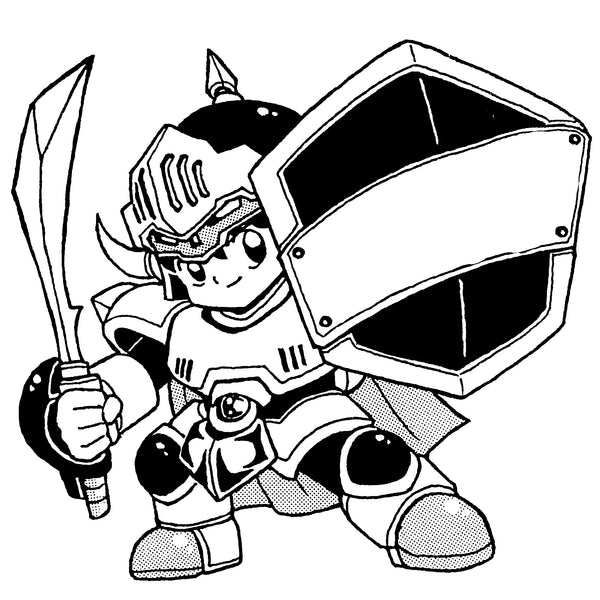Part 1: The Birth of the Famicom — Where It All Began: The Shock of Game & Watch
What Retro Games Taught Us About Life: Famicom Edition, Part 1
Today, video games are everywhere—so ordinary that we barely think twice about them.
But how many of us still remember the shock and wonder of encountering that “magical box” for the very first time?
For me, my earliest gaming memory was Donkey Kong on the Game & Watch.
The way those shadow-like characters moved with such determination—it was captivating, and I remember playing it over and over again.
But everything changed the moment I saw the Family Computer—the Famicom—at a friend’s house.
Vibrant graphics, worlds that changed with a simple cartridge swap... it was the future.
To a kid like me, it was a dazzling treasure chest of dreams.
Sure, those sharp-cornered A/B buttons made your thumbs hurt in no time, but who cared?
Homes with a Famicom naturally became hangout spots for all the neighborhood kids.
Together, we tackled The Tower of Druaga, or struggled with the notoriously difficult Spelunker.
The excitement, the teamwork—it still lingers vividly in my mind.
But who were the people behind this magical box?
What kind of vision and determination gave birth to something so revolutionary?
The answer begins with an outrageously reckless challenge that defied every common belief of its time.
Part 2: The Reckless Challenge — The Rise of Nintendo
What Retro Games Taught Us About Life: Famicom Edition, Part 2 Previously on Part 1:
Previously on Part 1:
The Famicom dazzled us with its colorful graphics and interchangeable game worlds—a true childhood treasure.
But behind its creation lies a story of bold defiance and unconventional thinking.
■ Headwinds and a Bold Command
In the early 1980s, Nintendo struck gold with the arcade hit Donkey Kong.
President Hiroshi Yamauchi, watching this success, became convinced:
“The time has come when arcade games should be played at home.”
So in 1981, he gave a nearly impossible order to hardware lead Masayuki Uemura:
“Create a machine so powerful that no other company can copy it for a year—and sell it for under 10,000 yen.”
At the time, however, the American market was collapsing under a flood of poorly made games.
This “Atari Shock” left many convinced that home consoles were a dying fad.
But Yamauchi saw it differently: “It’s not that games are over—it’s just that there were too many bad ones. If we make high-quality games, they’ll sell.”
■ Trust and Delegation
Surprisingly, Yamauchi never played video games himself.
His judgment rested solely on one question: “Is it fun or not?”
He openly admitted he wasn’t a creator, but he took immense pride in his ability to spot talent.
“I give reckless orders. But I won’t interfere. I only expect results.”
This philosophy revealed his deep resolve: he would take full responsibility for the outcome.
Trusting people is never easy, but he placed his full faith in Uemura and the development team.
That trust fueled the team’s tireless efforts.
But just two months before launch, disaster struck.
They discovered a critical bug: after extended gameplay on certain titles, the screen would always freeze.
With only weeks left, the Famicom project was on the brink of collapse.
Part 3 (Final): The Power of Simplicity — The Gateway to Our Adventures
What Retro Games Taught Us About Life: Famicom Edition, Part 3
Previously on Part 2:
With President Yamauchi’s unwavering trust behind them, the team pushed forward.
But just two months before release, they uncovered a fatal bug with no clear cause.
■ Scars of a Hero
In a race against time, the team worked day and night, eventually tracing the bug to a flaw in the CPU itself.
To meet the launch deadline, they implemented a daring solution—manually adding a bypass circuit directly onto the motherboard.
As a result, early Famicom motherboards looked messy and patched—but those scars were proof of the engineers’ determination.
They were the battle wounds of unsung heroes.
■ The Beauty of Simplicity
What the team accomplished in such a short time was incredible.
Despite the complexity of the task, the Famicom’s internal structure remained remarkably simple.
Even the screws used in the console—only one type.
Why such dedication to simplicity?
Because behind Yamauchi’s command to “keep it under 10,000 yen” lay a single, clear philosophy:
“For the children’s joy.”
Durable, affordable, easy to maintain.
Every decision, every detail, served that one purpose.
■ The First Door
Looking back now, there’s something truly astonishing:
Even after decades, Famicom games are still incredibly fun to play.
They haven’t faded with time.
Why?
Because Nintendo didn’t pour power into complexity.
They poured it into accessibility—into making something anyone could enjoy.
And thanks to that, we could lose ourselves in the game.
Time melted away. The world outside disappeared.
The Famicom wasn’t just a game console.
It was the first door to adventure.
